The use of stainless steel tubes in heat exchangers is a crucial element in numerous industries, offering unparalleled properties and dependability in heat transfer applications. As these tubes are integral to efficient thermal processes, understanding their intricacies and diverse applications is essential for professionals seeking to optimize performance.
Exploring the nuances of stainless steel tubes designed for heat exchangers unveils a world of technical specifications, innovative designs, and quality control measures that contribute to their functionality. By delving into the intricacies of these tubes, one can uncover a wealth of knowledge that shapes the core of thermal efficiency in various industrial settings.
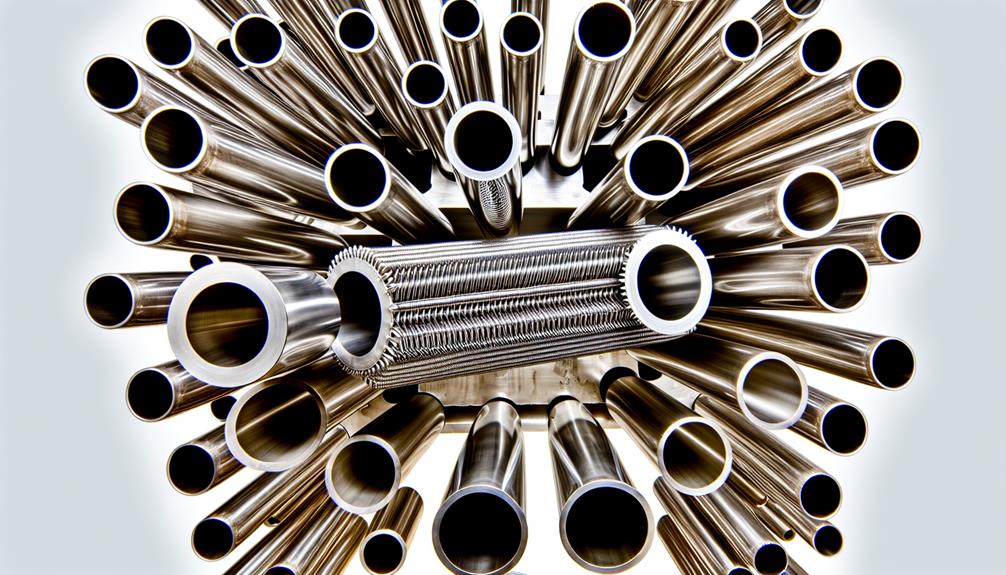
Heat exchangers are crucial components in various industries, facilitating the transfer of heat between fluids. Understanding flow arrangements, heat exchanger types, and applications is essential for optimizing heat transfer efficiency.
Different designs and configurations cater to specific needs, encompassing shell and tube, double-tube, and tube-in-tube heat exchangers.
In the realm of heat exchangers, the efficiency and effectiveness of heat transfer are significantly influenced by the specific flow arrangements employed, with counter-flow, parallel flow, and cross-flow being the primary configurations utilized.
Efficiency and effectiveness in heat exchanger design are closely tied to the specific types utilized, with shell and tube, double-tube, tube-in-tube, and plate heat exchangers representing distinct configurations that cater to various operational requirements.
Shell and tube heat exchangers allow for two fluids to exchange heat, offering good thermal efficiency and corrosion resistance.
Double-tube heat exchangers, with their basic design, provide an affordable and compact solution suitable for tight spaces.
Tube-in-tube heat exchangers feature coiled tubes for high-pressure applications, ensuring greater efficiency and energy savings.
Plate heat exchangers, with thin plates and large surface areas, are known for their compact design and high thermal efficiency. Each type offers unique benefits in material selection and operational performance.
Heat exchangers play a crucial role in various industries such as space heating, refrigeration, air conditioning, and power stations. They find extensive applications in chemical plants, petrochemical plants, and petroleum refineries, as well as in natural gas processing and even in wine and beer making.
Different types of heat exchangers like shell and tube, plate heat exchangers, and tube heat exchangers are utilized to efficiently transfer heat between fluids in diverse industrial processes.
The diverse range of industries and applications in which heat exchangers play a critical role highlights the indispensable nature of these thermal devices across various sectors.
Stainless steel heat exchanger tubes play a pivotal role in various industrial applications due to their exceptional resistance to high temperatures and corrosion, making them essential components for efficient heat transfer processes in boilers, heat exchangers, and condensers.
These tubes exhibit high thermal efficiency and corrosion resistance, crucial for heating, cooling, and condensation processes involving liquids, gases, and steam. Material selection is critical, with common grades including 304/304L, 316/316L, and so on.
The tubes are available in welded and seamless variants, with surfaces finished through annealing, pickling, or bright annealing. Welding techniques and performance evaluation are key considerations in their application, ensuring optimal heat exchange efficiency.
These tubes offer a range of alloys providing high strength, thermal conductivity, and corrosion-resistant properties, guaranteeing reliable performance even in extreme conditions.
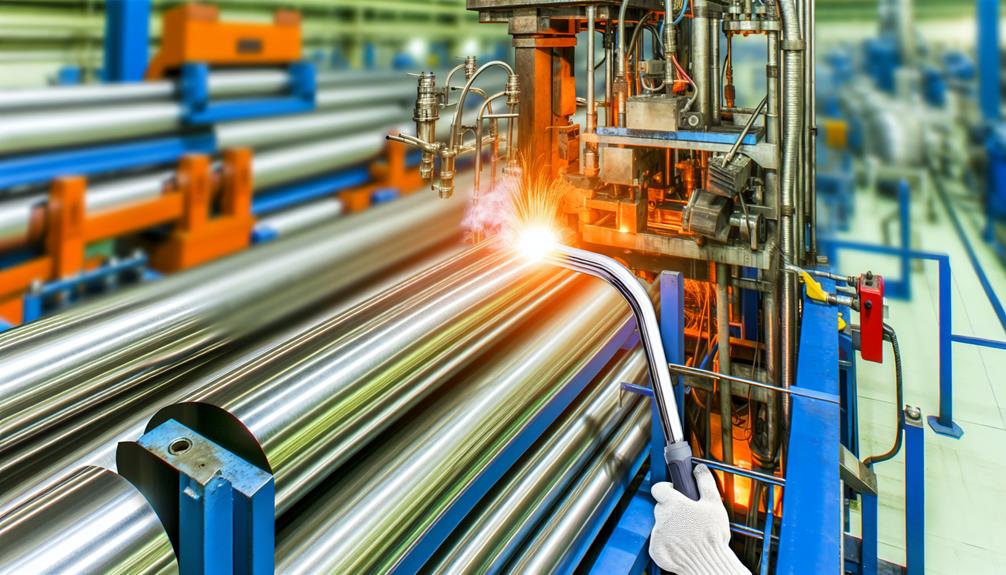
The manufacturing process of stainless steel tubes for heat exchangers encompasses welding and seamless techniques, heat treatment procedures, meticulous surface finishing, and polishing methods, alongside stringent quality control measures.
These critical steps ensure the tubes meet the required specifications for heat transfer efficiency, corrosion resistance, and durability in demanding industrial applications.
Manufacturing Welded Stainless Steel Tubes for Heat Exchangers involves a meticulous process of ensuring smooth surfaces through the removal of welding beads and subsequent grinding inside and outside the tubes.
This process is crucial in maintaining the integrity and functionality of the heat exchanger, with options for customized bends and coil configurations to suit specific requirements.
Moving from the meticulous process of manufacturing welded stainless steel tubes for heat exchangers, the seamless stainless steel heat exchanger tube production entails a precise approach to meeting various requirements with cold drawn and cold rolled finishing.
The seamless tubes offer exceptional corrosion resistance, ensuring longevity and thermal efficiency in heat transfer applications. Material selection plays a crucial role in enhancing the heat transfer properties of the tubes.
Implementing heat treatment processes is integral to the production of stainless steel tubes for heat exchangers, enhancing their mechanical properties and corrosion resistance.
Heat treatment benefits, drawbacks
Heat treatment techniques comparison
Heat treatment impact on material properties
Heat treatment process optimization
Heat treatment industry trends
How crucial is the process of surface finishing and polishing in ensuring the quality and performance of stainless steel tubes for heat exchangers?
Surface finishing plays a significant role in enhancing the corrosion resistance and overall durability of stainless steel tubes. Various polishing techniques are employed to achieve different surface treatment options, including mirror finish capabilities, which not only improve aesthetics but also contribute to the tubes' functionality.
The selection of the appropriate surface finishing method is crucial in maintaining the integrity of the stainless steel tubes, ensuring they meet the required standards for heat exchanger applications. By carefully considering the surface finishing and polishing techniques, manufacturers can provide heat exchanger tubes with enhanced performance and longevity.
Related Article: Comprehensive Guide to Stainless Steel Tube Surface Finishes
Surface finishing and polishing play a vital role in the quality assurance process of manufacturing stainless steel tubes for heat exchangers, ensuring optimal performance and longevity.
These measures collectively contribute to producing high-quality stainless steel tubes that meet the stringent requirements of heat exchanger applications.
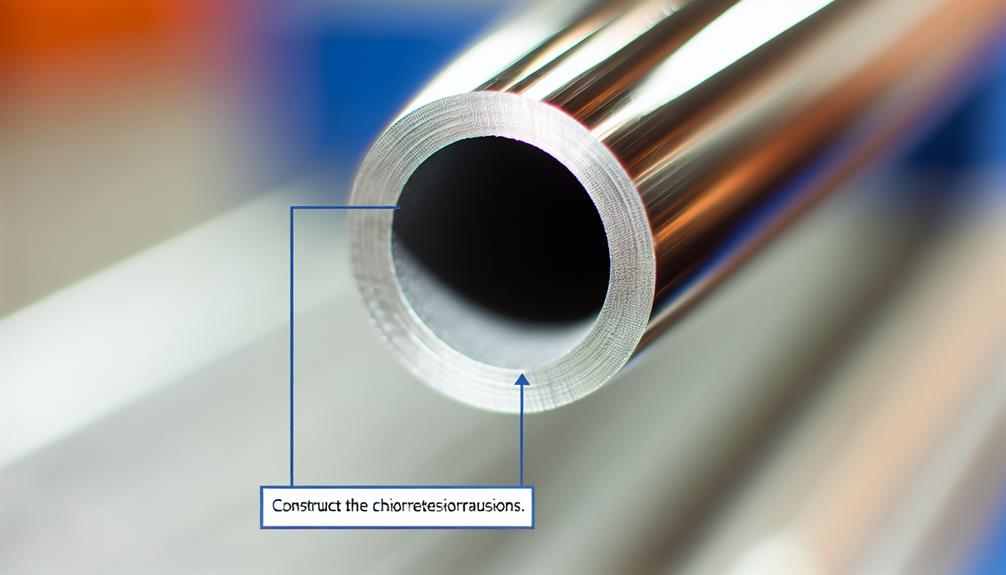
When considering heat exchanger tube materials, various options exist to suit different operational requirements. These include Austenitic Stainless Steels, Duplex Stainless Steels, Ferritic stainless steel, Martensitic stainless steel, and High-Alloy Austenitic Stainless Steels And Nickel Alloys.
Each material possesses unique properties that make it suitable for specific applications within the heat exchanger industry. Understanding the characteristics and performance capabilities of these materials is crucial in designing efficient and durable heat exchanger systems.
Austenitic stainless steels, known for their exceptional corrosion resistance and high-temperature strength, are widely utilized as heat exchanger tube materials in various industries.
Known for their superior strength and corrosion resistance, duplex stainless steels are highly sought after as prime materials for heat exchanger tubes in various industrial applications. These materials exhibit excellent corrosion resistance, making them suitable for challenging environments.
Welding techniques for duplex stainless steels are crucial to maintaining their corrosion resistance and mechanical properties. Additionally, their thermal conductivity is higher compared to austenitic stainless steels, enhancing heat transfer efficiency in heat exchangers.
The material properties of duplex stainless steels include high strength and toughness, making them durable and long-lasting in demanding operating conditions. Fabrication methods for these steels involve precision machining and forming to achieve the required heat exchanger tube specifications.
Duplex stainless steels, renowned for their exceptional strength and corrosion resistance in heat exchanger applications, have paved the way for the utilization of ferritic stainless steel as a prime material choice for these crucial components.
Utilizing martensitic stainless steel in heat exchanger tube construction provides enhanced strength and corrosion resistance for demanding industrial applications. Martensitic stainless steel is known for its high strength, hardness, and wear resistance, making it suitable for applications where toughness and durability are essential. This type of stainless steel requires careful heat treatment to achieve optimal material properties and performance. Welding techniques for martensitic stainless steel must be precise to maintain its corrosion resistance and mechanical properties. Additionally, surface finish plays a crucial role in preventing corrosion and ensuring the longevity of the heat exchanger tubes. The table below summarizes key aspects of martensitic stainless steel for heat exchangers:
| Aspect | Description | Importance |
|---|---|---|
| Corrosion Resistance | High resistance to corrosion | Critical for longevity |
| Heat Treatment | Precise treatment for optimal properties | Ensures material strength |
| Material Properties | High strength and hardness | Essential for durability |
| Welding Techniques | Require precision for corrosion resistance | Maintains mechanical properties |
| Surface Finish | Crucial for corrosion prevention | Ensures longevity |
High-alloy austenitic stainless steels and nickel alloys are integral materials utilized in the construction of heat exchanger tubes due to their exceptional corrosion resistance and high-temperature stability. These materials offer a combination of unique properties that make them ideal for demanding heat transfer applications.
Some key aspects to consider when using high-alloy austenitic stainless steels and nickel alloys in heat exchanger tube construction include:
These factors play a critical role in ensuring the durability, efficiency, and longevity of heat exchanger tubes in various industrial settings.
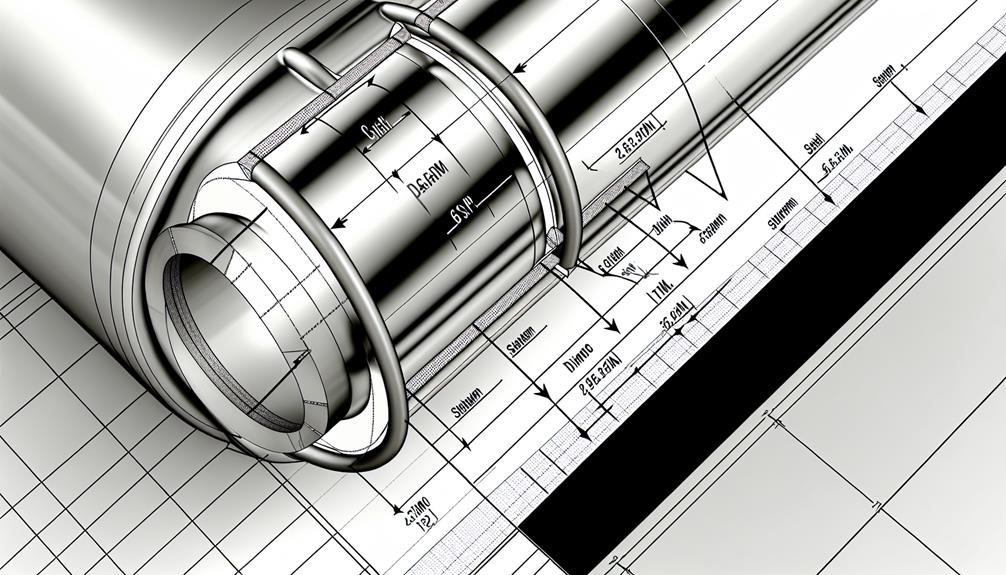
Concerning stainless steel heat exchanger tube specifications, the material composition plays a crucial role in determining the tube's performance and suitability for specific applications. Stainless steel heat exchanger tubes commonly utilize grades such as 304 Stainless Steel, 316 Stainless Steel, 321 Stainless Steel, Duplex Stainless Steels (e.g., 2205, 2507), Super Duplex Stainless Steels (e.g., UNS S32760), and 904L Stainless Steel. These grades offer varying levels of corrosion resistance, strength, and suitability for different operating conditions. Selection depends on factors such as temperature, pressure, corrosive media, and mechanical requirements.
These grades are selected based on their corrosion resistance, with austenitic stainless steels like 304 and 304L known for their excellent corrosion resistance and formability. Custom sizing options are available, with dimensions ranging from OD 6.53mm to 127mm and thickness from 0.5mm to 5mm, allowing for tailored solutions to meet diverse requirements.
Surface treatments like annealing, pickling, and bright annealing enhance the tubes' properties, providing options for different operational environments. Manufacturers adhere to standards such as ASTM A213, ASTM A269, and ASTM A789 for welded and seamless tubes, ensuring quality and compliance with industry requirements for efficient heat exchange processes.
Stainless steel heat exchanger tubes come in various sizes, with wall thicknesses defined by the Birmingham Wire Gauge (B.W.G.) and outside diameters maintained within strict tolerances. When considering tube selection and size considerations, the following factors are essential:
Ensure meticulous consideration of these aspects to optimize heat exchanger performance and durability.
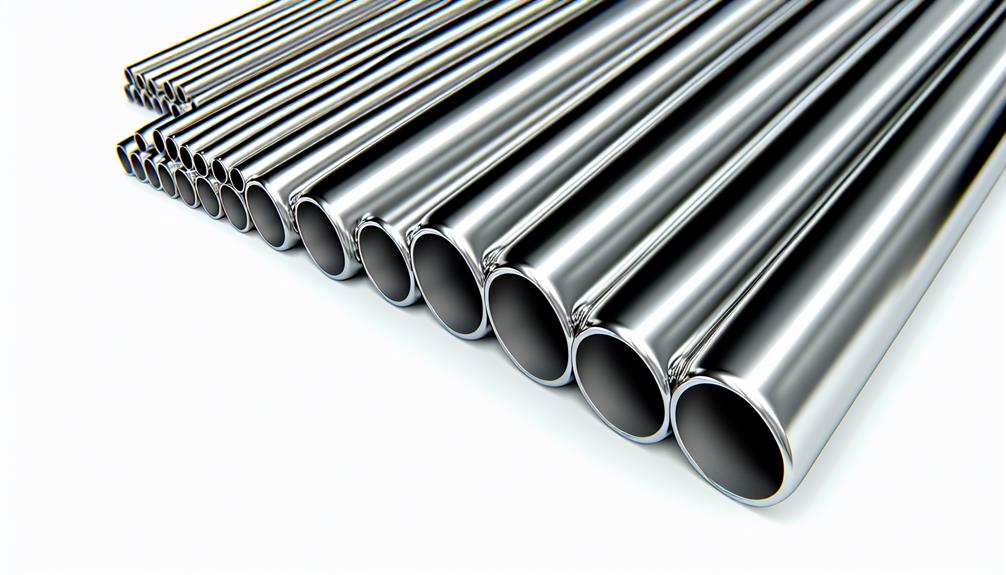
Standard dimensions and specifications for stainless steel heat exchanger tubes play a crucial role in ensuring optimal performance and compatibility within various industrial applications. Tube selection is a critical aspect that involves considering factors such as dimensional accuracy, material compatibility, heat transfer efficiency, and corrosion resistance.
These tubes typically range in outer diameter from 6.53mm to 127mm, with thicknesses varying from 0.5mm to 5mm, all held to a tolerance of +/-0.05mm. The selection of the appropriate size is essential to meet the specific requirements of heat exchanger systems. Dimensional accuracy ensures proper fit and function, while material compatibility guarantees long-term performance.
Heat transfer efficiency is maximized by choosing the right size for the intended application. Moreover, corrosion resistance is vital to prolong the lifespan of the heat exchanger tube in demanding environments. By adhering to standard stainless steel heat exchanger tube sizes, manufacturers can achieve reliable and efficient heat transfer in various industrial processes.
A diverse range of stainless steel grades are readily available for heat exchanger tubes, offering varying levels of corrosion resistance and thermal properties to meet specific industrial requirements.
Some key considerations when selecting stainless steel grades for heat exchanger tubes include:
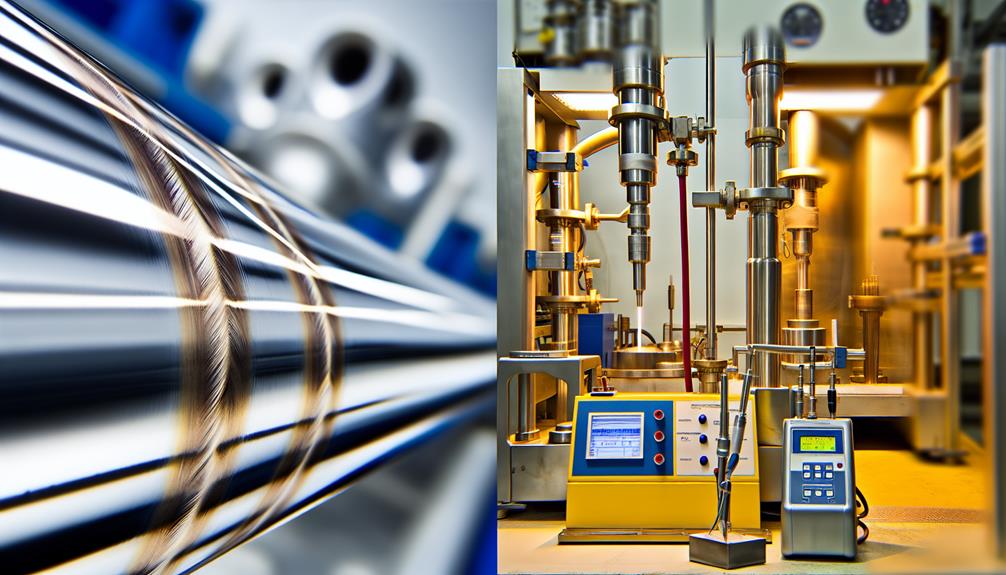
When conducting tests on stainless steel heat exchanger tubes, it is imperative to adhere to industry standards such as NACE MR0175, NACE MR 0103, and EN ISO 15156 to ensure the material's integrity and performance.
Corrosion resistance is a critical aspect that is evaluated through tests like intergranular corrosion testing following ISO 3651-2 METHOD A, ASTM A262 PRACTICE E, and MIL P24691/3.
Additionally, material testing procedures such as 100% PMI testing, hydraulic testing by A999 par22.2, and cold-finished material eddy current testing as per E426 are essential to verify the quality and durability of the tubes.
Various mechanical tests including tensile, hardness, flattening, flaring, and bend tests, along with chemical analysis, are conducted to ensure the tubes meet the required standards.
These rigorous quality assurance measures guarantee the performance and reliability of stainless steel heat exchanger tubes in demanding applications.
The applications of stainless steel tubes for heat exchangers span across various industries and sectors. These include HVAC systems, petrochemicals, food and beverage processing, pharmaceuticals, and power generation. These tubes are crucial components in heat exchangers used for space heating, refrigeration, air conditioning, and power stations.
Their versatility and durability make them indispensable in ensuring efficient heat transfer processes in a wide range of applications.
HVAC systems extensively utilize stainless steel tubes for heat exchangers due to their superior corrosion resistance and thermal conductivity properties, making them ideal for applications in heating, ventilation, and air conditioning technologies.
Stainless steel tubes are integral components in the petrochemical industry's heat exchangers, playing a crucial role in facilitating efficient heat transfer processes within a range of applications. The petrochemical industry demands materials with exceptional corrosion resistance due to the aggressive nature of the processes involved.
Stainless steel tubes offer superior resistance to corrosion, ensuring longevity and reliability in petrochemical operations. Their thermal efficiency further enhances the overall performance of heat exchangers, optimizing energy utilization. Material selection is critical in mitigating operational challenges such as high temperatures and corrosive environments.
Adhering to industry standards guarantees the quality and safety of heat exchanger systems in the petrochemical sector.
Enhancing the efficiency of food and beverage processing operations, stainless steel tubes play a pivotal role in heat exchangers by facilitating optimal heat transfer within these critical industrial applications.
In the pharmaceutical industry, the utilization of stainless steel tubes in heat exchangers is integral to ensuring precise temperature control and maintaining stringent quality standards during production processes. These heat exchangers play a crucial role in facilitating heat transfer, optimizing thermal efficiency, and meeting sterilization requirements essential for pharmaceutical processes. The heat exchange mechanisms in stainless steel tubes are vital in pharmaceutical applications where precision and consistency are paramount. Whether it's for cooling, heating, or maintaining specific process temperatures, stainless steel tubes provide the reliability and durability needed in pharmaceutical manufacturing. Below is a table highlighting the significance of stainless steel tubes in heat exchangers for the pharmaceutical industry.
| Aspect | Importance | Description |
|---|---|---|
| Heat Transfer | Essential | Facilitates temperature control |
| Pharmaceutical Process | Critical | Ensures quality standards |
| Thermal Efficiency | Key Factor | Enhances energy utilization |
| Sterilization Requirements | Vital | Meets stringent hygiene standards |
The utilization of stainless steel tubes in heat exchangers for power generation applications plays a critical role in optimizing thermal efficiency and facilitating heat transfer processes within various power generation systems.
Stainless steel tubes play a crucial role in the automotive industry by facilitating heat exchange processes in various components such as radiators and exhaust gas recirculation systems. The automotive applications of stainless steel tubes demand high material compatibility, ensuring efficient heat transfer while withstanding harsh operating conditions. These tubes offer exceptional corrosion resistance, vital for prolonged durability in the demanding automotive environment. Furthermore, customization options in terms of dimensions, grades, and surface finishes allow for tailored solutions to meet specific automotive heat exchanger requirements.
| Key Aspect | Description |
|---|---|
| Automotive Applications | Radiators, EGR Systems |
| Material Compatibility | High-grade Stainless Steel |
| Heat Transfer Efficiency | Optimal Thermal Conductivity |
| Corrosion Resistance | Protection Against Rust |
Utilizing advanced stainless steel heat exchanger tubes, the aerospace industry incorporates high-performance thermal exchange systems to maintain optimal operating conditions in critical aircraft components.
Proper maintenance and care of stainless steel tubes used in heat exchangers is essential to ensure optimal performance and longevity of the equipment. Tube maintenance plays a crucial role in preventing corrosion, which can significantly impact the efficiency and lifespan of the heat exchanger.
Implementing effective cleaning techniques is vital to remove any deposits or contaminants that could lead to corrosion. Longevity strategies such as regular inspections and preventive maintenance schedules can help detect potential issues early on and prevent costly repairs or replacements.
Performance optimization of stainless steel tubes can be achieved through proper monitoring of operating conditions and ensuring that the heat exchanger is operating within its design parameters. By following these maintenance practices diligently, the stainless steel tubes in heat exchangers can deliver reliable performance and extend their service life.
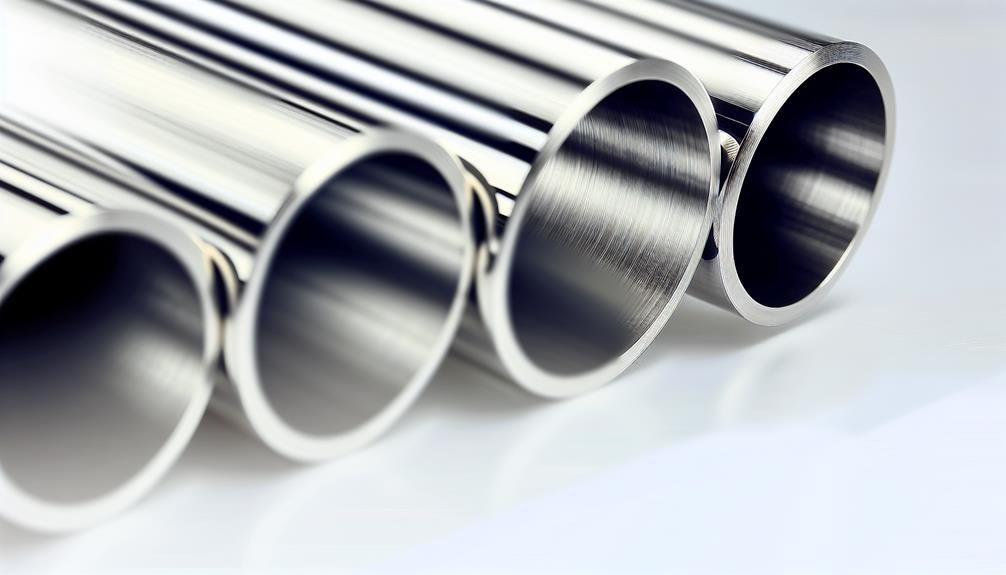
When it comes to sourcing stainless steel heat exchanger tubes of exceptional quality and reliability, look no further than Vinmay. As a leading Stainless Steel Heat Exchanger Tube Manufacturer, Vinmay excels in crafting tubes that meet the highest standards of performance and durability.
With a commitment to excellence and a track record of delivering top-notch products, Vinmay offers a wide range of stainless steel heat exchanger tubes designed to meet the diverse needs of industries worldwide.
Why Choose Vinmay for Your Heat Exchanger Tube Needs?
Experience the difference that Vinmay can make for your heat exchanger tube needs. Contact us today to discuss your requirements and discover how Vinmay can provide the perfect solution for you.
In high-pressure applications, stainless steel heat exchanger tubes exhibit exceptional pressure resistance, corrosion resistance, and flow optimization. Their design advantages comply with industry regulations, ensuring optimal performance and reliability under demanding conditions.
In corrosive environments, installing stainless steel heat exchanger tubes demands attention to corrosion resistance, material compatibility, and performance considerations. Proper installation techniques, maintenance requirements, and regular inspections are crucial for optimal performance and longevity.
Determining the optimal flow arrangement for a heat exchanger involves meticulous analysis of flow distribution, thermal efficiency, tube sizing, and material compatibility. By prioritizing design optimization and energy savings, performance can be maximized while minimizing pressure drop.
In comparing a tube-in-tube heat exchanger to a traditional shell and tube design, advantages include enhanced efficiency, cost savings, lower maintenance requirements, increased durability, and improved thermal performance. These factors contribute to superior operational effectiveness.
When considering stainless steel heat exchanger tubes, it's vital to adhere to industry standards like ASTM specifications for material composition and welding techniques. Performance testing and maintenance requirements must also comply with these regulations for optimal efficiency.
Blog Series:
In conclusion, the utilization of stainless steel tubes in heat exchangers is paramount for achieving optimal thermal efficiency in various industries.
The exceptional properties and reliability of these tubes make them indispensable components in heat transfer applications.
Their versatility, durability, and corrosion resistance make them a cornerstone in enhancing industrial processes.
The significance of stainless steel tubes in heat exchangers cannot be overstated, as they are vital for maintaining operational efficiency and productivity.
